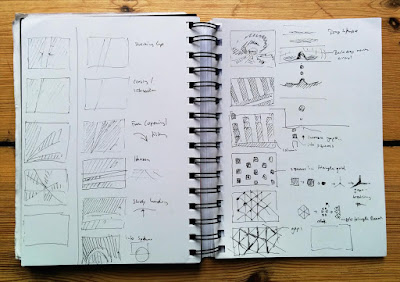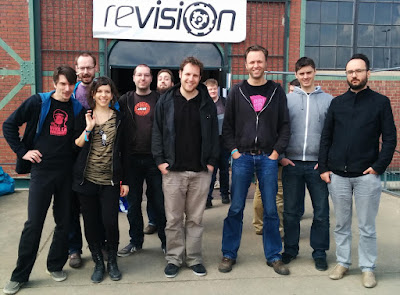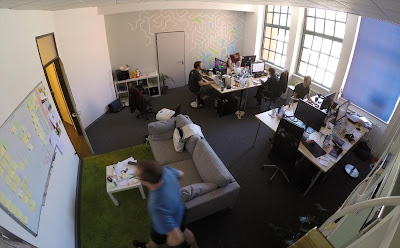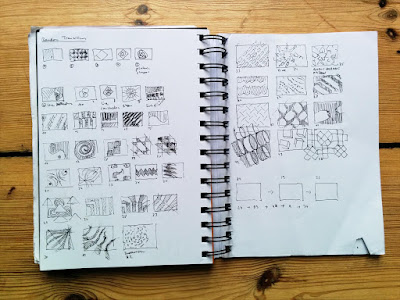Welcome to the Interview with Demosceners. This time, we welcome Pixtur who is taking care of graphics and designs (and code) of Still and LKCC!
In this interview, Pixtur talks about how got into the demoscene, importance of having a “concept” and how he get the inspiration and turns it into the demo.
And as you read on, maybe you’ll understand why Pixtur’s demo looks quite detail-oriented… 🙂 Happy reading! 🙂
My name is Thomas Mann. Although I share this name with a famous German writer, I was the big disappointment of my German-teacher. In the demoscene I use the nickname pixtur. I am a member of LKCC and Still. And sometimes I collaborate with other groups like Bauknecht. I guess the roles I’m most comfortable with are concept and editing. I have some experience with 3d-modeling and composition, too.
You got interested in computers in early age? Do you remember how it was like when you had first contact with a computer?
I grew up in East-Germany. Although the communist lacked the resources to make computers available to the general public, they clearly understood the importance of computer engineering. That’s why computer science was a favorite topic in kids’ magazines. I got so hooked, that I build a model of a computer out of cardboard and pretended to type on it. I think I even made some screens out of paper that I could insert into the display.
That is cute and creative 🙂 How old were you at that time?
I don’t really know. Maybe 10?
Ok, but you did touched the real computer afterward, right? 🙂
The dad of a good friend of mine was an engineer with access to a computer. He started to teach interested kids BASIC. His computer was self-assembled, even the keyboard was made out of elevator-buttons. There was no way to save your programs, so you had to write them on paper, type them in and test them out. He was an incredible motivating teacher. I think I was 12 by then.
Later I went through the whole computer science for kids program. It was held at an after-school location. The communists were anything but unstructured: before getting access to “real” computers you had to complete a series of courses like programming pocket-calculators in machine code. Over the next few years I spent all my free time there and met some kids that were just as eager and are still close friends today. We started a computer club – LKCC.
A few years later we got all pretty fluent in BASIC, Pascal and Assembler. Although the teachers couldn’t answer most our questions by then, they were very smart at motivating us.
Did you actually make something with those programming languages you learnt there? Like games?
We started to program games and eventually demos. But by then it was 1989 and the iron-curtain came down.
Can I ask what happened exactly? How did the iron-curtain affect your local club?
The story is actually kind of sad. The institution was called “Pionierhaus” which translates into something like house of pioneers. And since everybody now hated everything even remotely related to communism, this was a bad omen. The people who ran the place were anything but socialists. They were just a super nice bunch of nerdy teachers with no political agenda whatsoever. If anything they were the seed for a sub-culture of hackers. Well, they had close down the house within a year or two. Every time I hear a German politician complain about the lack for young engineers still makes me angry.
At least now we could afford “real” computers. We all got into gaming and spent some years with Doom. Some of us did some hacking and cracking games. I also wrote my fair share of BBS-intros and trainers. Eventually, we lost motivation in that stuff altogether. But since now most of the members of the computer-club studied at the same university, we turned LKCC into a volleyball team and participated in the student-league for a couple of years. I think we came in first once. Well, now I’m really drifting off, but you ask for it. 🙂
Sure, I appreciate these trivia more than you know 🙂 That’s great to know that you drove the club into another challenge 🙂 But you guys all learned much about programming and you decided to play games instead of making them? Somehow I find it quite odd.
At that time my friend and I had been developing a Wolfenstein 3D-like game engine. It was more than 1 megabyte of source-code – most of it highly optimized assembler code. And then came Doom. I vividly remember the first time I saw it, because it shattered our dreams of becoming game developers: It only need two functions in assembler (the rest was C++), but it featured curved walls, stairs, and windows. And it was still faster than our engine. This taught me the lesson, that a good algorithm always beats optimization. And that premature optimization is bad. So we basically stopped programming and started gaming.
That’s interesting… I thought normally people decided to make games because they saw nice games… but you did it other way around! 🙂 Ok, so when and how did you discover demoscene? And what motivated you to join?
During the university-time I was sharing an apartment with two other guys. One was a member of LKCC and the other was a fellow architecture student: Nero. He spent all of his free time working on old-school demos (e.g. “The Fulcrum” [video] by Matrix).
I was always puzzled by his never-ending motivation and didn’t really get why anybody would spent that much time on making “demos”. It seemed crazy. But some years later Diver of Salva Mea asked me if I could do some modeling for a demo-production. The concept looked kind of nice, so I agreed. We finished and released at Evoke 2002 and made the 2nd place (“Kassiopeia”). That weekend was one of the most rewarding experiences in my life. And I am addicted ever since.
How was it like to create your first demo? Was it fun?
After that I did a small project with Mad, who made a 3D engine and already had a nice soundtrack. Suddenly I was responsible for all design aspects, so the fight shifted from discussing design to begging the coder for more effects and control.
Oh, ok… now I’m imagining several guys trying to grab the wheel… 🙂 By the way, you mentioned “architect student”. Architecture? Why did you went in for architecture? By hearing your story, I believe you’ve been interested in computers, so you could’ve just chose Computer Science field…
I made the interesting observation that most people really do think in drawers: I’m not as good in programming as the coders I love to work with, but I know a thing or two about coding.
Really? Unfortunately I can’t tell if you are being honest or modest… then what about in your actual paid-work? Do you do both code and design? Or it’s code OR design?
During my freelancing time the jobs were evenly distributed between programming and design. Nevertheless for all my clients I was either “the coder” or “the designer”. They even got quite annoyed when I dared in one role to comment on the other.
The nice thing about knowing a bit of both worlds is that I might be better at discussing with developers. Sometimes driving them to really good results, sometimes driving them nuts. 🙂
Hahaha, Ok! 🙂 Do you find the thing you learned in the architecture field is useful in programming and designs?
It might not have been instructional for computer programming. But nowadays my “profession” is more that of a user interaction designer. I believe that architecture gave me a strong foundation in thinking problems through and presenting them nicely. If you think about it, there are a lot of similarities between designing a building and designing a GUI: There is an entry, there are stairs, navigation, short-cuts, there are rooms and windows. They even call it “screen real-estate”.
The other thing I learned at university was about almost fanatically focusing on a concept. If you don’t have a concept all design decisions are random and driven by taste and your gut-feeling. This might work for some people. But having a concept makes it much easier to discuss design in a team or with your clients.
So the concept is the pillar… That’s good to know… Ok, let me go back to the demoscene topic. How do your projects start usually? Could you explain your demo-making process?
I gave a long talk on that topic at NVscene 2015. Basically I start with a concept or an idea and let it ripe for some time. We have a wiki with potential demos. I recently started to collect references for every project on Pinterest. Eventually I start building research scenes and approach musicians. By then I have a pretty good idea of what I want to do.
I’ve checked your seminars, or I’d like to call Pixtur’s How to make demo series 🙂 It was very detailed and got many practical examples/advices that I find it’s useful for non-demo project as well. But why do you reveal this much technique? You could’ve kept all these secrets to yourself and just bear away prizes!
Keeping secrets is never a good long term plan. And most of the things are not secrets to begin with. Like Newton put it: “We’re all standing on the shoulders of giants.” It’s all bits and pieces borrowed all over the place. Giving talks helps to really think the stuff through and understand it. If you can explain it – you understood it.
Oh, Ok! Then where do you get your inspiration for your work?
This is hard to say. Sometimes it’s basically “me too” – this was the case with “Square”. Sometimes I actually get an original idea, for instance while listening to a soundtrack. I regularly visit classical concerts with my mom. Whenever I’m listening to a big orchestra I start drifting. Nowadays I pay attention and try to remember and write down the images in my head.
What do you mean by “me too?”
More like a cheap clone of something already invented. Everybody did this raymarching stuff, and I decided to give it a try as well. I used a mandelbox shader by Mad and played around with it. In my point of view the “problem” with all the releases so far was the obsession with the 4KB limit. But with 4KB you can’t use a proper soundtrack and sophisticated camera-animations (at least I can’t). I think all the content in Square would have easily fit into 32KB, but who cares…
“Square” by Still
Ok, thank you. I believe there are several stages in demo making process like brainstorming, coding… Which stage of process do you like the most?
I love the few precious days when the exploration shows that I got something interesting. Before that it’s hell. After that it’s polishing (which is also hell). I had a work-flash once while working on “Perfect Love” [video]. I still don’t know how to get into that kind of flow.
This is super rare. I almost did with “Passing”. But most of the time it’s not even close. Sometime I’m still satisfied. Sometimes I’m super disappointed. And quite frequently my degree of satisfaction contradicts the feedback we get on Pouet (note: Demoscene portal site).
So, you can say “Passing” is your (own) most favorite demo so far?
Interesting conclusion, but you’re right on spot! Passing still is the best concept I came up with: It’s a simple effect that looks kind of nice and can be transformed in endless variations. I really like the idea that the camera is not moving in the whole demo: the world is scrolling by. This endless loop matches nicely with the images and desperation I hear in the Mad’s soundtrack. It’s like a never-ending David Lynch nightmare made by endless repetition.
“Passing” by Still
Nightmare… Ok… I got it… So, what program do you use to make demo? Do you create your own tool?
I’m a control freak. I need to be able to tweak parameters to nudge keyframes. Without a tool, I would drive coders insane.
At Still we use a program called tooll.io. A personal dream of mine is to build a tool that help other people to make demos. It’s a long way, but with “Coronoid” [video] it worked out for the first time. Watching somebody using your tool to be creative is even more satisfying than being creative yourself.
Could you show us where your demo is born? Do you set theme or atmosphere of the demo, or write down your ideas on the notepad?
 |
“Some sketches I did for Intrinsic Gravitiy” photo by Pixtur |
Ooohh, so these sketches were turned into that demo! 🙂 Thanks for sharing! Then regardless of what project you’re working on, do you set your own rule or goal? Is there anything you really care about when you make demo?
I try hard not to repeat myself. At Still we’re jokingly referring to the list of forbidden ingredients: No cities, no lens-flares, no white-flashes, no dust particles. It’s hard.
Right… the more you make, the more you get the forbidden items.. 🙂
Ok, time to shoot this classic question. Your favorite demo, memorable demo, demo that changed your life… anything. Tell us a demo(s) which is special to you.
Of course Future Crew was super influential. But later I got into demos that build up an atmosphere that hinted more than it explained. For a long time, my favorite demo was “Energia” [video] by Sunflower, then “ASDF” [video] by Mel Funktion and Little Bitchard, and finally “Numb Res” [video] by Fairlight. I guess I always had a special love hate relationship to Fairlight.
I believe that the meaning of life is to figure out what makes you happy. Maybe the communist propaganda of my childhood had effect on me after all: gathering money and stuff doesn’t work for me. Of all the things I tried so far working with friends on challenging creative projects is the most effective method to keep me happy.
The way to be happy… So you’re constantly challenging yourself but having fun doing it 🙂 That’s nice, you get happier and better at the same time ! Then what is “good demo” and “good tool” to you?
One day I want to make a mega-demo like “Stargazer” [video] or “Agenda Circling Forth” [video]. Until then I’ll try to keep doing smaller pieces on topics I’m not comfortable with. I want to do something with particles. But first I have to figure out how to sort them. And eventually I want to bring our demos into VR.
Very much looking forward to that 🙂 And finally, your message for demosceners and demo fans out there please.
To learn making better demos you have to release demos.
——————————————————————–
Thank you so much for answering all the questions, Pixtur!
If you want to check Still and LKCC’s work, be sure to check their website (click their name). And as he presented in the interview, he has been giving several seminars around “Demo Making”. I find it’s really practical and informative, so I highly recommend watching these series if you’re trying to make demos.
“Concept, Camera, Composition and Color” (Revision 2003)
“Rules of Thumb for (Slightly) Better Design” (Revision 2004)
And if you’re interested, his tool “tooll.io” can be beta tested from here 🙂
Thank you very much for reading this till end! 🙂
———————————————————————-
In case you’re wondering what “demo” or “demoscene” is, better check out the well-made documentary called Moleman2. (and the director, M. Szilárd Matusik’s interview can be read in here.)
#1: q from nonoil/gorakubu is here.
#2: Gargaj from Conspiracy, Ümlaüt Design is here.
#3: Preacher from Brainstorm, Traction is here.
#4: Zavie from Ctrl-Alt-Test is here.
#5: Smash from Fairlight is here.
#6: Gloom from Excess, Dead Roman is here.
#7: kioku from System K is here.
#8: kb from Farbrausch is here.
#9: iq from RGBA is here.
#10: Navis from Andromeda Software Development is here.
#11: Pixtur from Still, LKCC is here.
#12: Cryptic from Approximate is here.
#13: 0x4015 aka Yosshin is here.
#14: Flopine from Cookie Collective is here.
#15: noby from Epoch, Prismbeings is here.
Why I’m interested in demoscene is explained in this article.
And for some of my other posts related to “demo and “demoscene” culture is here.







